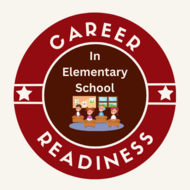Elementary Career Readiness Resource Roundup
(View Complete Item Description)Wisconsin's E4E legislation Act 20 requires that districts plan career awareness activities at the elementary grade levels, including developing an understanding of the following:1. Why people work.2. The kinds of conditions under which people work.3. The levels of training and education needed for work.4. Common expectations for employees in the workplace.5. How expectations at school are related to expectations in the world of work. The attached slide deck presented by Andréa Donegan, School Counseling Consultant at the WI Dept. of Public Instruction and Jenny Holle, Elementary School Counselor at the Burlington Area School District provides a wealth of linked resources to get your district started on their elementary career exploration journey.
Material Type: Other














